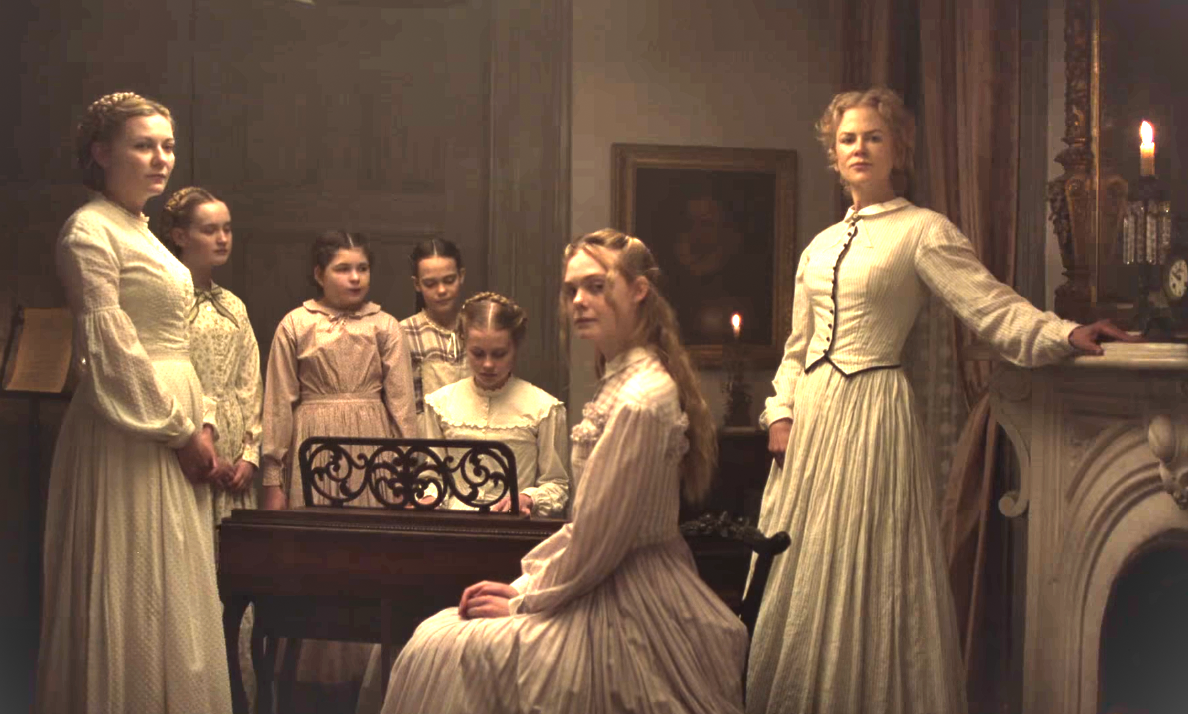Director: Sofia Coppola
Starring: Colin Farrell, Nicole Kidman and Kirsten Dunst
Sofia Coppola’s latest release, The Beguiled, is a Southern Gothic tale of exquisite style. Set during the American Civil War, a girl picking mushrooms from a forest in Confederate Virginia comes across a wounded Union Army soldier. She helps him back to the girls seminary from which she came, a kindness which thrusts the man into the world of five seminary girls, tutored by the reticent Edwina (Kirsten Dunst), and governed by Miss Martha (Nicole Kidman), who insists on the proper education and moral rearing of the girls. What unfolds is a simmering, comic drama of estimating and integrating this strange soldierly man, played by Colin Farrell. At first the girls are scared and then weary of the intruder, but in an effort to nurse him back to health, their attitudes change and their affection grows. After a series of brief encounters they compete for his attention and approval. One night changes all of this, and so begins the Corporal’s outrage and slight commandeering of the household.
At first, I found this portion of the film to lack its full expression, at least in its reserve of gothic potential. Coppola exercises all manner of tonal accuracy, sexual tension, and character confidences in the lead up to the fall out. But there was little time to be scared of the Corporal in his fury and anguish. As uncomfortable as it was, I anticipated the film to dwell in this spot, to push each character to the edge of their wits and sympathies. I wonder at her reasons for not continuing to exploit this change from household harmony to intimidation and fear. The Corporal is pitiful really, encumbered by disability and sloppy desires. His masculine assertions ridiculed and ineffective. Yet, in that space after the story turns and flips I wanted something more exploratory. But I think this says more of my expectations of the film rather than the success of Coppola’s project.
Based on a novel by Thomas P. Cullinan (which I haven’t read and haven’t heard much of), the film is almost a plot carbon-copy of the 1971 film of the same name, directed by Don Siegel, starring Clint Eastwood and Geraldine Page. Where it departs is in its style and tone. I think this comes to what I feel is perhaps an unevenness to the film; exposition heavy and slow to unravel. It’s probable that any change to this simmering, stirring quality would disrupt Coppola’s mood-setting – forfeiting her brushwork to maverick action-making. Reviewers of the film describe it as “steamy” and “dreamily stylized”, adopting a language nearly erotic. Indeed, Coppola’s rendition is sensual and suffused with a distinct comedy of manners. A scene in which Miss Martha is washing the Corporal’s body captures perfectly her intimations of fear and desire, her cheeks flushed and breath quickening as she moves the damp cloth upward along his thigh. Here, the camera is close and wanders over her face and hands. Such intimate scenes are spliced with longer shots of the seminary, with its grand front columns and a fog gently settling on the overgrown garden.
In cinematography, style, and symmetry, The Beguiled excels. It feels like a painting – lushly set and intimately drawn. Much of the film lies in what is unsaid, relying on the viewer’s perception of hidden fears, hopes and inhibitions. For what I initially felt was a regimented plot, too tailored for mood-setting and panoptic brushstrokes, I now recognise as a necessary and beautifully rendered aesthetic mission.
Words by Ryan Suckling

